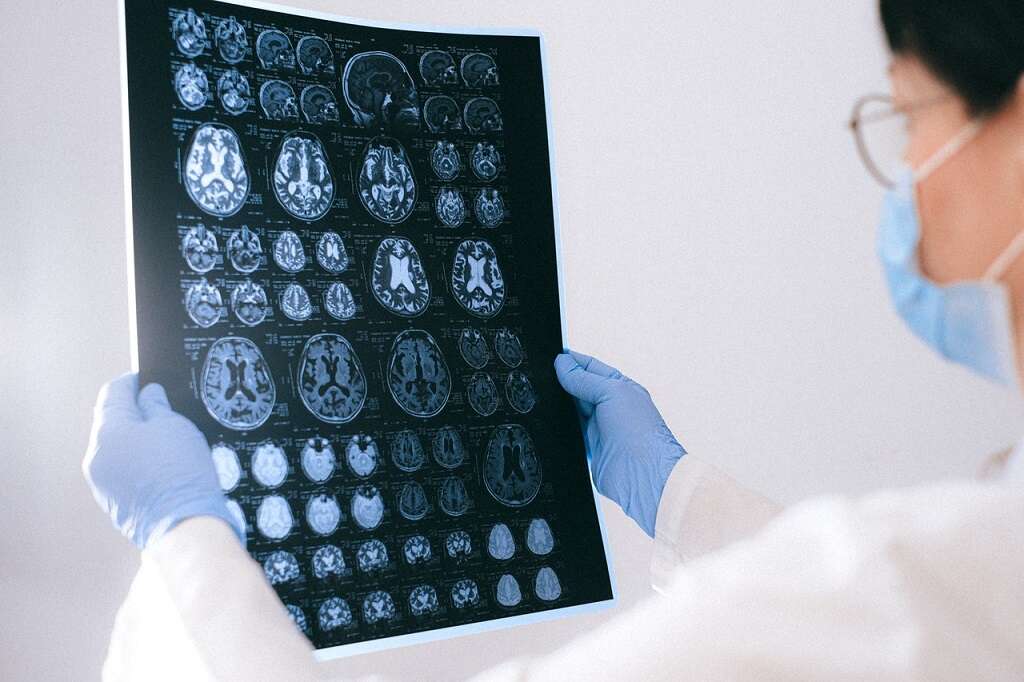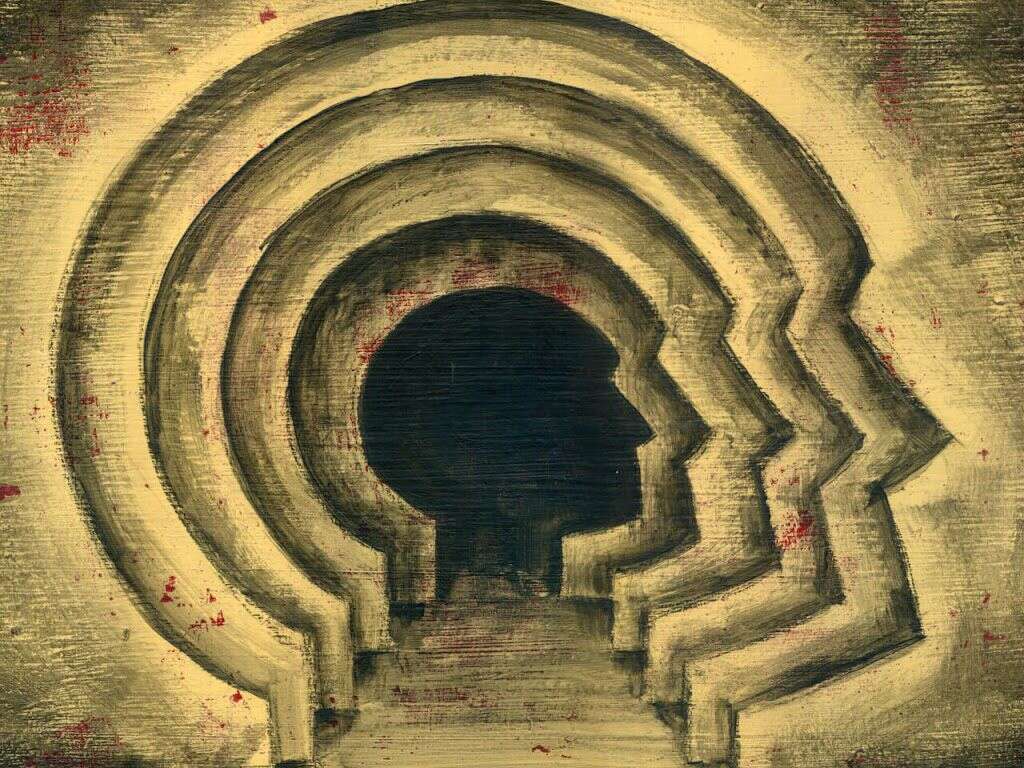10 Alice In Wonderland Syndrome Symptoms
 Article Sources
Article Sources
- 1. Weissenstein, Anne, Elisabeth Luchter and Stefan Bittmann. 'Alice in Wonderland Syndrome: A Rare Neurological Manifestation with Microscopy in a 6-Year-Old Child.' Journal of Pediatric Neurosciences, 2014, doi: 10.4103/1817-1745.147612
- 2. Blom, Jan Dirk. 'Alice in Wonderland Syndrome: A Systematic Review.' Neurology Clinical Practice, vol. 6, no. 3, June 2016, cp.neurology.org/content/6/3/259
Alice In Wonderland Syndrome, or AIWS, might sound like a fantastical condition straight out of the well-known children's tale. However, the issue is quite real and impactful to people of all ages. The condition is characterized by symptoms that alter normal perception and cause disorientation.1Weissenstein, Anne, Elisabeth Luchter and Stefan Bittmann. ‘Alice in Wonderland Syndrome: A Rare Neurological Manifestation with Microscopy in a 6-Year-Old Child.’ Journal of Pediatric Neurosciences, 2014, doi: 10.4103/1817-1745.147612
The condition is most prevalent at night. There's still a great deal of ongoing research about AIWS, and as such, treatment options are limited to medications that help improve the symptoms. Possible risk factors of AIWS range from infections to migraine headaches, stress, certain medicines and epilepsy.1Weissenstein, Anne, Elisabeth Luchter and Stefan Bittmann. ‘Alice in Wonderland Syndrome: A Rare Neurological Manifestation with Microscopy in a 6-Year-Old Child.’ Journal of Pediatric Neurosciences, 2014, doi: 10.4103/1817-1745.147612

Altered Body Image
Altered body image is the dominant symptom of AIWS. The individual views body parts with altered perception, making some parts seem larger or smaller than they are in reality.1Weissenstein, Anne, Elisabeth Luchter and Stefan Bittmann. ‘Alice in Wonderland Syndrome: A Rare Neurological Manifestation with Microscopy in a 6-Year-Old Child.’ Journal of Pediatric Neurosciences, 2014, doi: 10.4103/1817-1745.147612 While this can happen with any part of the body, the individual generally experiences this symptom in relation to the head and hands.2Blom, Jan Dirk. ‘Alice in Wonderland Syndrome: A Systematic Review.’ Neurology Clinical Practice, vol. 6, no. 3, June 2016, cp.neurology.org/content/6/3/259
The reason that the condition has the Alice in Wonderland moniker is because of the well-known children's story of the same name. Throughout the story, Alice notices her body growing larger and smaller at various intervals.2Blom, Jan Dirk. ‘Alice in Wonderland Syndrome: A Systematic Review.’ Neurology Clinical Practice, vol. 6, no. 3, June 2016, cp.neurology.org/content/6/3/259

Inaccurate Visual Perception
Inaccurate visual perception, aside from that related to body image, is another common symptom of AIWS. The extent of this symptom varies among those with the condition. Inaccurate visual perception in AIWS means the individual perceives object sizes incorrectly.1Weissenstein, Anne, Elisabeth Luchter and Stefan Bittmann. ‘Alice in Wonderland Syndrome: A Rare Neurological Manifestation with Microscopy in a 6-Year-Old Child.’ Journal of Pediatric Neurosciences, 2014, doi: 10.4103/1817-1745.147612
One of the ways this symptom may manifest is straight lines perceived as wavy or curved. Objects that might otherwise be stationary manifest as moving.2Blom, Jan Dirk. ‘Alice in Wonderland Syndrome: A Systematic Review.’ Neurology Clinical Practice, vol. 6, no. 3, June 2016, cp.neurology.org/content/6/3/259 The individual might also see vertical lines as slanted.2Blom, Jan Dirk. ‘Alice in Wonderland Syndrome: A Systematic Review.’ Neurology Clinical Practice, vol. 6, no. 3, June 2016, cp.neurology.org/content/6/3/259

Migraine
A migraine headache is considered both a risk factor of AIWS and a trademark symptom. Migraines may vary in severity, depending on the significance of the disease. They may also be part of any comorbidity exacerbating AIWS.1Weissenstein, Anne, Elisabeth Luchter and Stefan Bittmann. ‘Alice in Wonderland Syndrome: A Rare Neurological Manifestation with Microscopy in a 6-Year-Old Child.’ Journal of Pediatric Neurosciences, 2014, doi: 10.4103/1817-1745.147612
Further diagnosis is necessary to determine the presence of AIWS over other conditions that cause migraines. Moreover, proper diagnosis can ensure that treatment addresses this symptom effectively, as it can be extremely debilitating.

Altered Perception of Time
Altered perception of time is another common feature of AIWS. The individual may lose all sense of time entirely. They might also feel as though time is passing too quickly or too slowly, depending on the extent of this symptom.2Blom, Jan Dirk. ‘Alice in Wonderland Syndrome: A Systematic Review.’ Neurology Clinical Practice, vol. 6, no. 3, June 2016, cp.neurology.org/content/6/3/259
This is another correlation to the Alice In Wonderland story as time is relative in the book, just as it can be for those with this rare medical issue.

Hallucinations
Hallucinations may also manifest as a symptom of AIWS. Some people have stronger hallucinations than others, to the point of visualizing things that are not real. This might include seeing people, places or objects that appear to be convincingly real to the individual. This can cause them to further lose touch with reality.1Weissenstein, Anne, Elisabeth Luchter and Stefan Bittmann. ‘Alice in Wonderland Syndrome: A Rare Neurological Manifestation with Microscopy in a 6-Year-Old Child.’ Journal of Pediatric Neurosciences, 2014, doi: 10.4103/1817-1745.147612
Those with AIWS might also inaccurately judge a specific person or event based on something they're seeing that isn't real.1Weissenstein, Anne, Elisabeth Luchter and Stefan Bittmann. ‘Alice in Wonderland Syndrome: A Rare Neurological Manifestation with Microscopy in a 6-Year-Old Child.’ Journal of Pediatric Neurosciences, 2014, doi: 10.4103/1817-1745.147612

Distorted Auditory Processing
Distorted auditory processing is another symptom of AIWS. Even if the person doesn't see things that aren't actually there, they might hear things that aren't real.2Blom, Jan Dirk. ‘Alice in Wonderland Syndrome: A Systematic Review.’ Neurology Clinical Practice, vol. 6, no. 3, June 2016, cp.neurology.org/content/6/3/259 They might also hear things that aren't appropriate for the image in question.
For example, the noise from a passing airplane might sound to the person like musical notes from an instrument.2Blom, Jan Dirk. ‘Alice in Wonderland Syndrome: A Systematic Review.’ Neurology Clinical Practice, vol. 6, no. 3, June 2016, cp.neurology.org/content/6/3/259 The level of distortion is generally based on the sensory perceptions of the individual.

Length of Symptoms
The length of AIWS symptoms varies based on the individual and the extent of the disorder. For some, symptoms only last a few minutes or hours.2Blom, Jan Dirk. ‘Alice in Wonderland Syndrome: A Systematic Review.’ Neurology Clinical Practice, vol. 6, no. 3, June 2016, cp.neurology.org/content/6/3/259
In other cases, symptoms can manifest continuously over the course of days or years. AIWS may disappear completely by the time it reaches early adulthood. However, in other cases AIWS can be a lifelong condition, and symptoms may come and go.2Blom, Jan Dirk. ‘Alice in Wonderland Syndrome: A Systematic Review.’ Neurology Clinical Practice, vol. 6, no. 3, June 2016, cp.neurology.org/content/6/3/259 Treatment options remain sparse as research is necessary to determine specific causes and comorbidities of AIWS.

AIWS Prevalence
The prevalence of AIWS remains somewhat unknown as the condition has not manifested widely enough to elicit large swaths of population data.2Blom, Jan Dirk. ‘Alice in Wonderland Syndrome: A Systematic Review.’ Neurology Clinical Practice, vol. 6, no. 3, June 2016, cp.neurology.org/content/6/3/259 Clinical data indicates that condition prevalence among those with migraines is around 15 percent.2Blom, Jan Dirk. ‘Alice in Wonderland Syndrome: A Systematic Review.’ Neurology Clinical Practice, vol. 6, no. 3, June 2016, cp.neurology.org/content/6/3/259
However, research shows that individual symptoms associated with AIWS may be more widespread than initially thought. Ongoing research is focused on parsing out those populations that might be most prone to developing AIWS and which age groups might be most at risk.2Blom, Jan Dirk. ‘Alice in Wonderland Syndrome: A Systematic Review.’ Neurology Clinical Practice, vol. 6, no. 3, June 2016, cp.neurology.org/content/6/3/259

Diagnosis
Diagnosis depends on obtaining a comprehensive medical history of the individual along with knowledge of AIWS symptoms. Blood tests, brain MRI and EEG are also necessary to rule out other conditions.2Blom, Jan Dirk. ‘Alice in Wonderland Syndrome: A Systematic Review.’ Neurology Clinical Practice, vol. 6, no. 3, June 2016, cp.neurology.org/content/6/3/259
However, the research does note that while these diagnostic tools are necessary, the chances of finding lesions on the brain to indicate the presence of disease are typically low.2Blom, Jan Dirk. ‘Alice in Wonderland Syndrome: A Systematic Review.’ Neurology Clinical Practice, vol. 6, no. 3, June 2016, cp.neurology.org/content/6/3/259 This is why experience with the condition is generally necessary to accurately diagnose it.

Treatment
Treatment modalities are minimal. Most cases of the condition are largely benign. Full remission can sometimes be obtained, either spontaneously or with treatment.2Blom, Jan Dirk. ‘Alice in Wonderland Syndrome: A Systematic Review.’ Neurology Clinical Practice, vol. 6, no. 3, June 2016, cp.neurology.org/content/6/3/259
Typically, treatment consists of antiviral or antibiotic medications to treat underlying infections, or drugs for migraines if this condition is present. Effective treatment is necessary for underlying conditions that increase the risk of developing AIWS. Antipsychotics are usually not recommended because AIWS is not a true psychosis, and these drugs may in fact aggravate the condition.2Blom, Jan Dirk. ‘Alice in Wonderland Syndrome: A Systematic Review.’ Neurology Clinical Practice, vol. 6, no. 3, June 2016, cp.neurology.org/content/6/3/259









